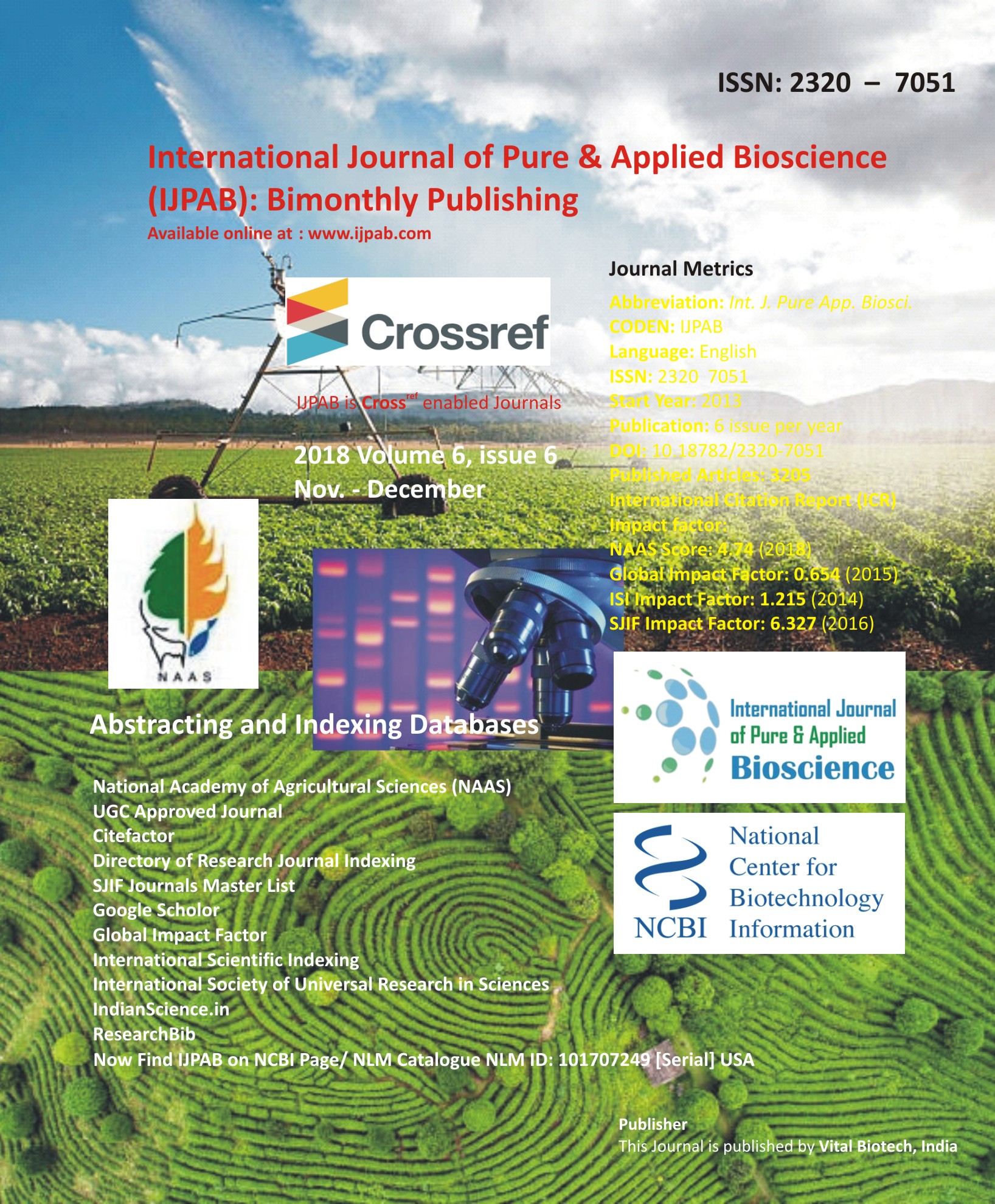
-
No. 772, Basant Vihar, Kota
Rajasthan-324009 India
-
Call Us On
+91 9784677044
-
Mail Us @
editor@ijpab.com
International Journal of Pure & Applied Bioscience (IJPAB)
Year : 2018, Volume : 6, Issue : 6
First page : (64) Last page : (71)
Article doi: : http://dx.doi.org/10.18782/2320-7051.7109
Energy Use Pattern in Mango Production at Mall – Malihabad Mango Belt of Utter Pradesh
Anil Kumar Verma1*, A.K.A. Lawrence2, Ashok Tripathi3 and Surendra Pal4
1&4PhD Scholar, 2Professor Department of Renewable Energy Engineering
3Professor Department of Farm Machinery and Power Enfineering
Vaugh Institute of Agricultural Engineering and Technology, Sam Higginbottom University of Agriculture, Technology & Sciences (formerly Allahabad Agriculture Institute), Allahabad (U.P)
*Corresponding Author E-mail: lkoanil@gmail.com
Received: 2.11.2018 | Revised: 24.11.2018 | Accepted: 3.12.2018
ABSTRACT
The paper examines the energy use pattern in mango production at the Mall – Malihabad mango belt of Utter Pradesh, which is famous Deshehari mango growing area in India. Data were collected from 50 mango orchards by using a face-to-face survey, after selected the farmers using multi-stage stratified random sampling approach. The results revealed that the energy consumption ranged from 7870 to 9535 MJha-1 with an average of 8845 MJha-1. The standard deviation of energy consumption was calculated as 481 MJha-1.The chemical energy inputs 30.77%, mainly in pesticides, has the largest share in the total energy consumption followed by diesel fuel (25.84%). The results also revealed that the total non-renewable energy inputs were 83.51% of the total energy consumption. The direct and indirect form of energy was used 49.67 and 50.33 percent, respectively. The productivity in marginal orchard size was low and increase with increase in orchard size up to medium size orchards (4.4 ha) then almost constant, and its ranged 8700 to 19150 kg/ha with an average of 12304.22 kg/ha. The standard deviation of productivity was calculated as 3787.87. The energy ratio, energy productivity, and net energy yield for mango was estimated to be 3.05, 1.33 kgMJ-1and 18162.75 MJ ha-1, respectively.
Key words: Mango, energy analysis, energy productivity, energy intensiveness, INR (Indian Rupee), MJ (mega joule).
Full Text : PDF; Journal doi : http://dx.doi.org/10.18782
Cite this article: Verma, A.K., Lawrence, A.K.A., Tripathi, A. and Pal, S., Energy Use Pattern in Mango Production at Mall – Malihabad Mango Belt of Utter Pradesh, Int. J. Pure App. Biosci.6(6): 64-71 (2018). doi: http://dx.doi.org/10.18782/2320-7051.7109

